Dutch architect and furniture designer, Gerrit Thomas Rietveld was a leading figure of the movement known as De Stijl. Further, his simple shapes, vibrant colors, and geometric pieces are still synonymous with De Stijl and its aesthetic.
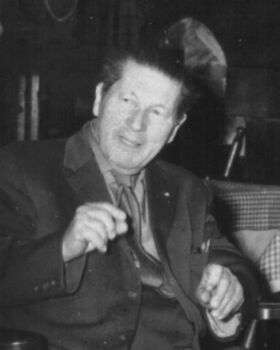
image source: https://en.wikipedia.org/wiki/Gerrit_Rietveld#/media/File:Gerrit_Thomas_Rietveld.jpg
About His Life
On June 24, 1888, Gerrit Thomas Rietveld was born in Utrecht, where he would spend most of his life. In his early life, he trained as a cabinetmaker under his father between 1899 and 1906. Later, he studied as a jewelry designer in the studio of C. J. Begeer from 1906 to 1911. Then, Rietveld’s career as an independent architect began in 1919, the same year as his entrance in the De Stijl movement, which advocates for geometric abstractism as a means towards harmony and balance. In 1921, he began a period of collaboration with the designer and Dutch socialite Truus Schröder-Schräde, and they created the Rietveld Schröder House. By the 1930s, Rietveld’s fame seemed to have passed, but with renewed interest in De Stijl due to production following World War II, he began receiving important commissions once more. Rietveld died on June 25, 1964, in Utrecht.
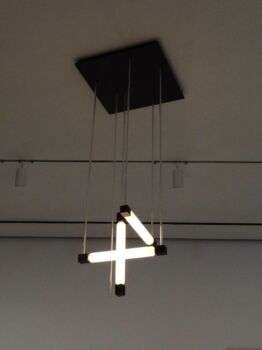
Image source: https://search.creativecommons.org/photos/6a541166-eb7f-470d-a490-4e312d8a467a by westher
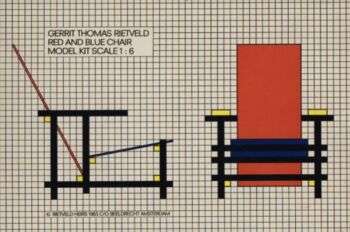
Image source: https://search.creativecommons.org/photos/a52d55f4-4ebc-4517-870b-9d4aa18a3d1e by dr vaxon
His Works
Focused mainly in Holland, his architectural accomplishments include an Amsterdam jewelry shop (1921), the Row Houses at Utrecht (1931-34), the Dutch Pavilion at the Venice Biennial (1954), the Sculpture Pavilion in the Rijksmuseum Kröller-Müller at Otterloo, the Van Gogh Museum in Amsterdam (1955) and, most importantly, the Schröder House at Utrecht (1924). Additionally, the last structure is currently listed as a UNESCO World Heritage Site.
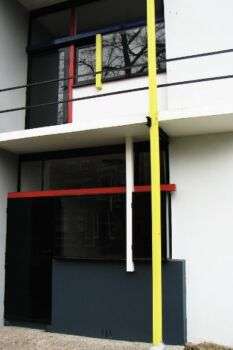
Image source: https://search.creativecommons.org/photos/04f804e3-b243-4232-b1ec-71d589aaf2b1 by Lauren Manning
To further elaborate on the latter, the house is a family-sized habitation, built to emphasize a geometric balance between the individual shapes. In addition, it is a flexible interior spatial arrangement with an unconventional yet fresh approach to architecture that is an icon of Modern architecture.
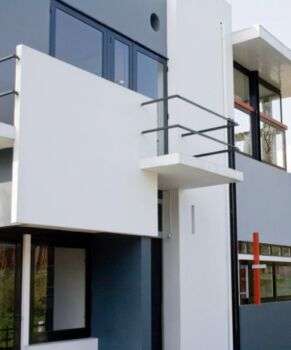
Image source: https://search.creativecommons.org/photos/2f6748d7-9701-497f-988a-048a7b70c6ed by on1stsite.

Image source: https://search.creativecommons.org/photos/748443fd-1660-400e-bdcd-2ea8ae60ca63 by ivtoran
Additionally, he designed the Red and Blue Chair (1918-1923), which looks almost like a tridimensional version of a Piet Mondrian painting, the Schröder 1 (1923), the Zig Zag Chair (1934) and the Utrecht (1935).
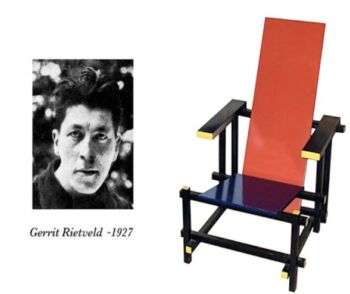
Image source: https://search.creativecommons.org/photos/3fa24286-e8b1-4ad7-8677-539eca86c7b9 by Cea.
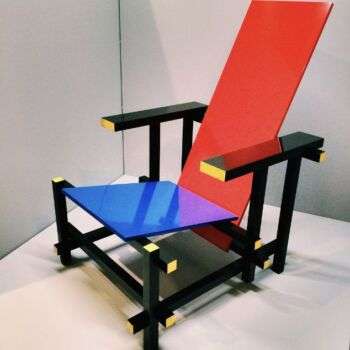
Image source: https://search.creativecommons.org/photos/f8ec4976-ea4a-4ccf-8699-0c9bca4af6d6 by DocinhoLelê
Stylistic Traits
Most of his works encapsulate the De Stijl principles. Rietveld adopted what he perceived to be a purer form of geometry, consisting of straight lines and basic geometric shapes, largely rendered in the three primary colors, as well as black and white. Further, he embraced an abstract, stripped-down, yet elegant aesthetic. Partly a reaction to the excess of Art Deco, the reduced quality of De Stijl art, envisioned by its creators as a universal visual language, is aimed towards a perfect balance between art and life.
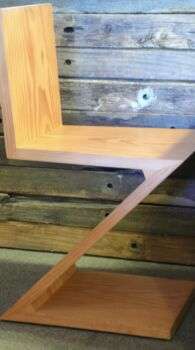
Image source: https://search.creativecommons.org/photos/6fcc44f1-7171-416e-8040-da1c6374992f by macglee (Flickr account)
Info sources:
